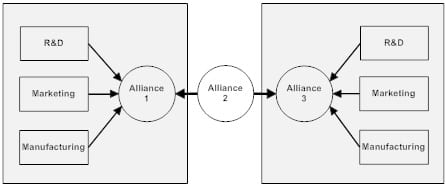By: Chuck Frey
One of the reasons why open innovation is so hard to implement is because you must open up your internal innovation processes to another organization. According to one innovation expert, you actually need to manage three sets of relationships in any potential partnership, which explains why it’s so hard to create a successful open innovation alliance.
One of the reasons why open innovation is so hard to implement is because you must open up your internal innovation processes to another organization, one which may have a culture and values that are significantly different than those of your organization.
That’s why it’s critical that you have your internal innovation processes in excellent shape before you begin to explore partnerships and alliances outside of your organization. If you haven’t reached consensus internally on what your innovation objectives, strategies and processes are, how can you hope to collaborate in a meaningful way with an outside partner?
In reality, points out Gene Slowinski of Rutgers University, every time you enter into an alliance with an outside firm, you’re actually dealing with three sets of relationships, which must be aligned if any meaningful results are to come from it (see the diagram above). There’s the visible relationship at the point of interface between your company and your prospective partner. The other two relationships are internal – the cross-functional teams within your firm and that of your alliance partner. Each of those teams must also agree on key aspects of the deal. This is harder than it seems, which is why many open innovation initiatives tend to fail.
Think about your corporate culture for a moment. Do all of the key executives agree on the strategic direction of the firm? How open are they to fostering outside relationships? Chances are your company has a number of factions, each with their own strongly held sets of opinions. Reaching consensus on strategic issues can often be a long, painful process.
What’s the solution to this challenge? Slowinski, in his presentation at the 2010 CoDev & Open Innovation Conference, offered this advice: Start with the assumption that you’re going to craft an innovation framework that maximizes the value for both companies. Encourage your prospective alliance partner to do the same. Then compare your two frameworks. Chances are, they will be better aligned, which will increase the odds that your alliance will be a successful one.

